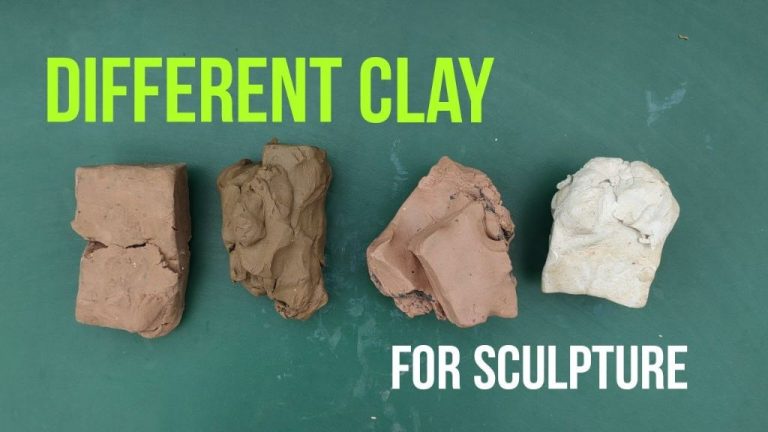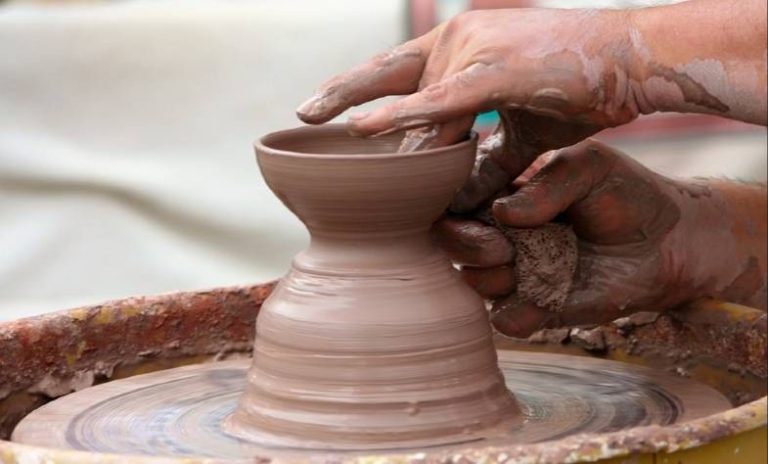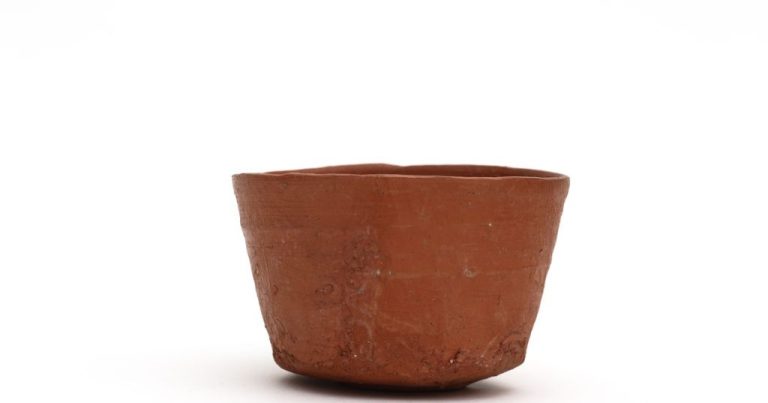How Do You Get Natural Clay?
Clay is defined as a natural, earthy, fine-grained material composed primarily of hydrated silicates of aluminum and other minerals (The 5 Time-Honored Secrets to Healthy Living). It can be molded when wet and becomes hard and brittle when dried or fired. Clay has many industrial and domestic uses including pottery, bricks, artificial cement, and cosmetics. Natural clay is sought after because it contains no synthetic additives and has not undergone high heat treatment that can alter its mineral properties. Natural clays contain trace minerals that some believe offer health benefits when cooking or used topically. Obtaining unaltered and unadulterated clay allows people to get back to basics and utilize this versatile material in its purest form.
Where Natural Clay Is Found
Natural clay deposits are found all over the world. Some of the main deposit locations and common clay types include:
North America – Deposits of kaolin, bentonite, and common clays are found across the United States and Canada. Large deposits of kaolin clay are found in Georgia and South Carolina. Bentonite deposits are common in places like Wyoming and Montana. Common clays are widespread across the Midwest and Eastern regions. (Source)
Central & South America – Kaolin and common clays are found in many regions like Brazil and Mexico. Deposits of bentonite clay can be found in places like Argentina and Chile. (Source)
Europe – Kaolin deposits are found in England and Germany. Bentonite deposits occur in places like Greece and Italy. Common clays are found across many regions. (Source)
Asia – China and India contain large deposits of kaolin and common clays. Bentonite is found in areas like Mongolia. (Source)
Africa – Kaolin, bentonite, and common clays are found across the continent. Notable deposits occur in countries like South Africa, Morocco, and Egypt. (Source)
Australia – Large bentonite deposits are found across Australia. Kaolin and common clays occur in many regions as well. (Source)
Alluvial Clay
Alluvial clay is formed by the deposition of clay and silt particles in river beds, flood plains, lakes, and other water bodies. As flowing water slows, the suspended particles settle and accumulate over time. Alluvial deposits are characterized by stratified layers of different sized particles like sand, silt, and clay based on the speed of water flow that deposited them [1].
Some locations to find alluvial clay deposits are floodplains, deltas, lakes, rivers and streams that experience periodic flooding. The Mississippi River valley in the central United States contains large deposits of alluvial clay. Other major alluvial clay deposits are found in India, China, and Northern Europe [2].
Alluvial clays have unique properties based on their depositional environment. They tend to have high plasticity and strength when compacted, making them ideal for construction materials like bricks and Portland cement. Alluvial clays also contain trace minerals washed in from weathered rocksupstream, giving them potential economic value [3].
Residual Clay
Residual clay is formed by the chemical weathering and breakdown of rocks over long periods of time. This occurs when soluble minerals are removed while insoluble minerals like quartz and silicates remain behind. According to Dill 2017, residual clay deposits can form directly on top of basement rocks through supergene argillitization.
Residual clays are abundant in humid tropical and subtropical regions where chemical weathering is intense. They often occur along with laterite soils. Some major deposits are found in Brazil, Africa, India and Southeast Asia (USGS). Residual clays tend to be quite porous and permeable. They also have high contents of sesquioxides like iron and aluminum oxides compared to transported clays. The composition reflects the parent rocks they formed from.
Compared to other clay types, residual clays have relatively high maturity and advanced development. They exhibit strong granular structure and textures. Residual kaolinite clays have excellent whiteness, fine particle size, and high purity that make them suitable for paper, ceramics and other applications.
Marine Clay
Marine clay is clay found in coastal regions that was deposited in sea water environments. It forms from the decomposition of feldspar and volcanic rock that erodes into the ocean. The clay particles then settle on the seafloor and accumulate over time into clay deposits (Thiry, 2000).
Some major marine clay deposits can be found along the eastern coastline of the United States and Gulf of Mexico, as well as in parts of Europe like the North Sea (Bates College, 2021). The clay in these deposits was carried into the ocean through river systems and then settled on the continental shelves.
Marine clay has high plasticity which makes it useful for manufacturing clay products. It also typically has a high montmorillonite content, giving it swelling and adsorption capacities that can be utilized for industrial applications. Marine clays are mined both onshore and offshore to obtain these useful properties.
Lacustrine Clay
Lacustrine clay deposits form in lake basins when very fine-grained sediments like clays and silts settle out of suspension in quiet lake waters. Over time, these fine sediments accumulate at the bottom of the lake to create lacustrine clay deposits. Some of the largest lacustrine clay deposits in North America formed in ancient Pleistocene lakes, like those left behind by melting glaciers (https://www.science.gov/topicpages/l/lacustrine+clay+deposits).
Major lacustrine clay deposits are found in the northern Great Plains region of the United States and Canada, where large Pleistocene lakes once existed. For example, extensive lacustrine clay beds up to 300 feet thick occur in the glaciated portions of North Dakota and Minnesota (https://agupubs.onlinelibrary.wiley.com/doi/full/10.1029/2021GC009916). Other significant deposits are located in the basins of former Glacial Lake Agassiz in Minnesota and Manitoba, as well as in the Lake Champlain Valley of Vermont (http://nesoil.com/properties/formation/sld018.htm).
Lacustrine clays consist predominantly of very fine clay minerals like smectite, illite, kaolinite, and chlorite. They often contain variable amounts of silt and sand-sized particles as well. Lacustrine clays tend to have high plasticity and high dry strength, making them useful for manufacturing bricks, lightweight aggregate, cement, and other products.
Glacial Clay
Glacial clay deposits are formed through the movement and melting of glaciers. As a glacier moves across the landscape, it grinds up rock into fine particles. When the glacier eventually melts, these fine rock particles are deposited in the landscape as glacial clay. Some key properties of glacial clay include:
- High plasticity due to the small particle size
- Wide range of colors depending on mineral composition
- Low permeability
- High shrink-swell capacity
In the United States, significant glacial clay deposits are found across states that were covered by glaciers in the last ice age, including Michigan, Minnesota, North Dakota, Montana, New York and parts of New England. The state of Michigan in particular has extensive glacial clay deposits from the retreat of the Laurentide ice sheet around 12,000 years ago (Michigan’s Clay Deposits and Industry). These deposits include the Saginaw Clay located in the Saginaw Bay region.

Glacial clays can be accessed where they occur close to the surface. Glacial clay deposits are often mapped by geological surveys to aid in identification and access. Test drilling may be done to determine the depth and extent of glacial clay deposits in a given area.
Obtaining Natural Clay
If you want to obtain natural clay yourself, one option is to dig clay on your own land. Look for exposed clay deposits, often found near bodies of water or in areas with a history of flooding. Using a shovel, dig down several feet until you hit moist clay. Extract clay in chunks, removing rocks, roots and debris. Allow the clay to dry slightly before processing further.
Another option is to buy clay from reputable ceramic suppliers. When purchasing clay, look for finely processed clay free of contaminants. High-quality clay should be smooth and pliable, uniform in color, and labeled with details on firing temperature range. Some common types of natural clay used in pottery include earthenware, stoneware, and porcelain.
No matter where you get natural clay, proper processing is vital. Clay dug from the ground needs to be mixed with water to disperse it into a slurry, then poured through a screen to filter out rocks and debris before drying. Purchased clay may still require some additional wedging or kneading before using to achieve optimal consistency. With quality clay and proper processing, you’ll be ready to handbuild or throw your ceramics.
Storing and Preparing Clay
Proper storage is crucial for maintaining the quality and workability of natural clay. After extracting raw clay from the ground, it is important to keep it from drying out. The best method is to seal the clay tightly in thick plastic bags or airtight containers. Store clay in a cool, dark place to prevent moisture loss. Adding a damp sponge or towel to the storage container will help regulate humidity.
Before using clay for pottery or sculpture, it often needs preparation. Hard clay is dried then crushed into smaller pieces. A roller or hammer mill crushes clay into a fine powder. Next, the powder is screened through a mesh to remove rocks and debris. Water is added to create a workable consistency. Most clays benefit from aging, allowing chemicals time to interact and improve plasticity and strength. Wedging or kneading eliminates air pockets.
Clay can be combined with other materials to modify properties. Adding grog or fired clay particles makes clay less plastic and more porous when fired, preventing cracking and warping. Sand, vermiculite, perlite, and straw also reduce shrinkage. Organic additives like plant fibers may burn out during firing and leave desirable textures. Up to 25% of non-plastic ingredients can be blended with clay.
Proper preparation and storage helps improve clay quality. Crushing, screening, wedging, and mixing clay with additives gives potters and artists the materials they need for shaping their creations.
Conclusion
Natural clay offers many benefits for both health and beauty. This versatile substance contains an abundance of minerals, vitamins, and other nourishing properties. When applied topically, natural clay helps draw out impurities, balance oil production, exfoliate dead skin cells, and hydrate the skin. Clay also provides soothing and healing effects for various skin conditions. Consuming natural clay can aid digestion and detoxification. Specific types of clay are suited for different uses based on their composition. With proper sourcing and preparation, high quality natural clay is an exceptional resource from the earth that supports wellness.
The healing tradition of using clay continues today and is gaining popularity as more people seek natural solutions. Taking advantage of clay’s gifts can enhance skincare routines, dietary habits, and therapeutic practices. By understanding the origins, obtaining methods, applications, and types of natural clay, we gain a greater appreciation for this ancient substance and its role in nurturing health from head to toe.





